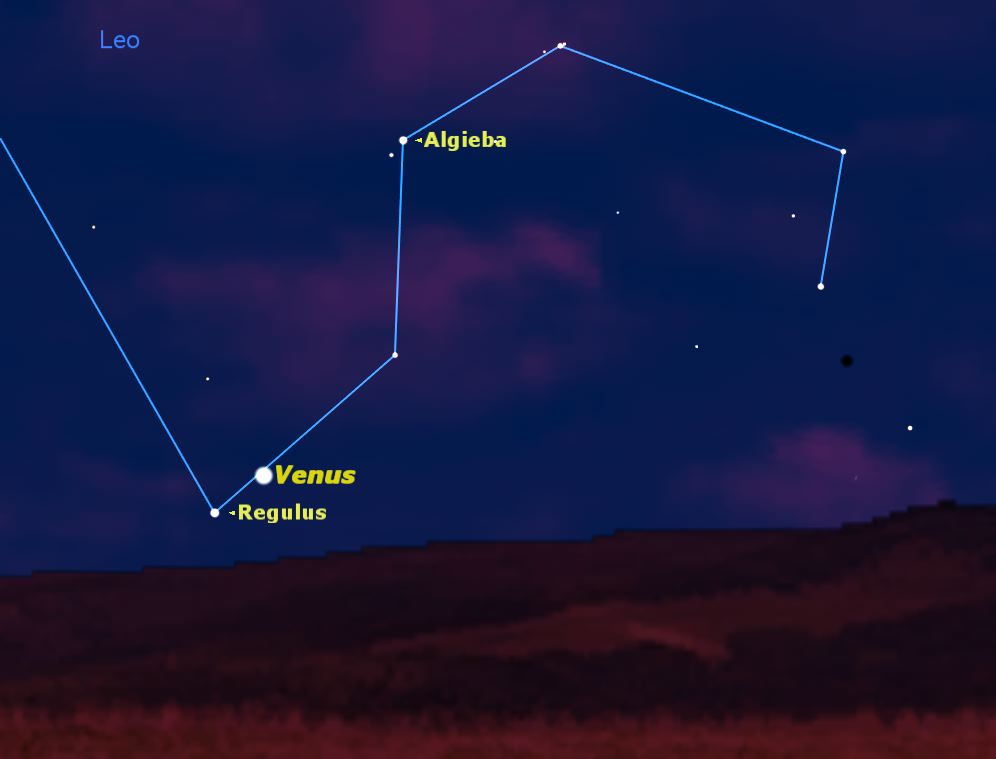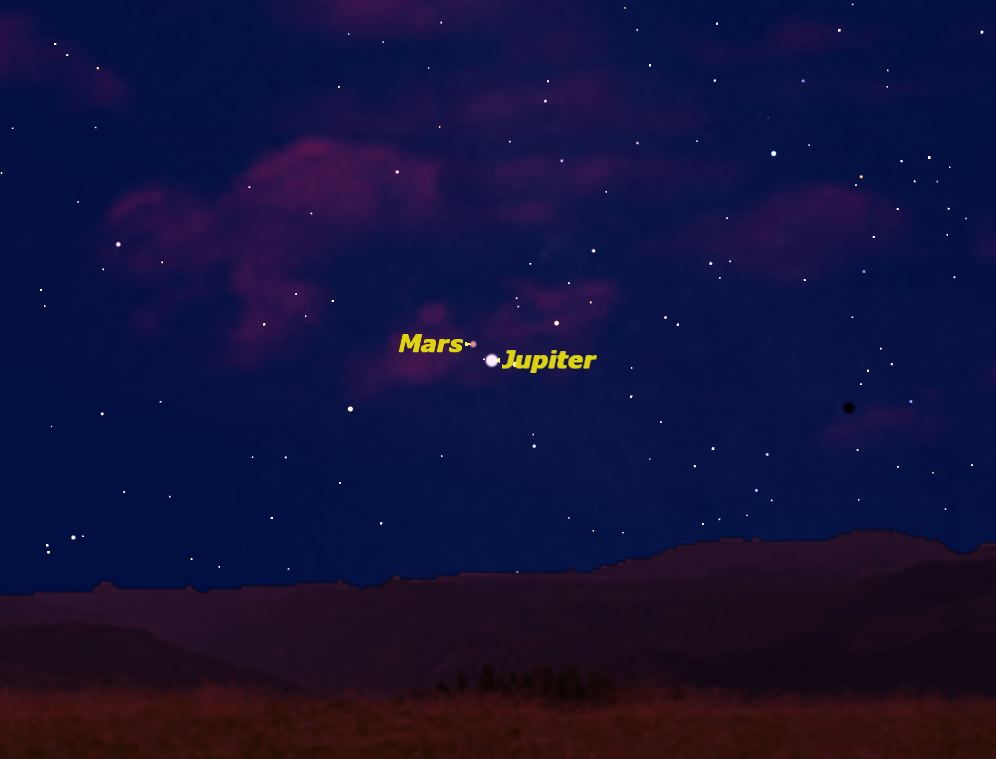See Jupiter, Venus and Mars: Planet Close Encounters in July's Sky

July has been full of encounters between astronomical objects, and the action continues this weekend with three different planets taking center stage.
The moon and the star Spica have already lined up this month, as have Mars and the star cluster Messier 35. Now Venus is set to dance with the bright star Regulus on Sunday evening (July 21), while Mars and Jupiter have a date the following morning.
This Sunday, look for Venus close to Regulus in the western sky just after sunset, in the constellation Leo (The Lion).
Although Regulus is one of the brightest stars in the sky, Venus is far brighter and will thus be much easier to see. Once you spot Venus, look below and to its left to see Regulus. If you’re south of the equator, Regulus will be above and to the left of Venus.
Later that night, an hour before dawn on Monday (July 22), look in the northeastern sky to see Jupiter and Mars rise together in the constellation Gemini (The Twins). Jupiter will be the brighter of the two planets, with reddish Mars above and to its left. If you’re in the southern hemisphere, Mars will be below and to the left of Jupiter.
If you have access to a telescope, these paired planets will make an interesting sight, with Jupiter accompanied by its four bright Galilean moons — Io, Europa, Ganymede, and Callisto.

What will be most noticeable is the tremendous difference in size between the two planets. While both are on the far side of the sun, Mars is much closer than Jupiter. Even so, Jupiter will appear more than eight times larger in diameter than the Red Planet.
Get the Space.com Newsletter
Breaking space news, the latest updates on rocket launches, skywatching events and more!
The planets move relatively slowly compared to the moon, so if you miss these events on Sunday night and Monday morning, try again the following night and morning. You should still get a good show
Editor's note: If you snap an amazing picture of the night sky that you'd like to share for a possible story or image gallery, send photos, comments and your name and location to Managing Editor Tariq Malik at spacephotos@space.com.
This article was provided to SPACE.com by Starry Night Education, the leader in space science curriculum solutions. Follow Starry Night on Twitter @StarryNightEdu.
Join our Space Forums to keep talking space on the latest missions, night sky and more! And if you have a news tip, correction or comment, let us know at: community@space.com.

Geoff Gaherty was Space.com's Night Sky columnist and in partnership with Starry Night software and a dedicated amateur astronomer who sought to share the wonders of the night sky with the world. Based in Canada, Geoff studied mathematics and physics at McGill University and earned a Ph.D. in anthropology from the University of Toronto, all while pursuing a passion for the night sky and serving as an astronomy communicator. He credited a partial solar eclipse observed in 1946 (at age 5) and his 1957 sighting of the Comet Arend-Roland as a teenager for sparking his interest in amateur astronomy. In 2008, Geoff won the Chant Medal from the Royal Astronomical Society of Canada, an award given to a Canadian amateur astronomer in recognition of their lifetime achievements. Sadly, Geoff passed away July 7, 2016 due to complications from a kidney transplant, but his legacy continues at Starry Night.










